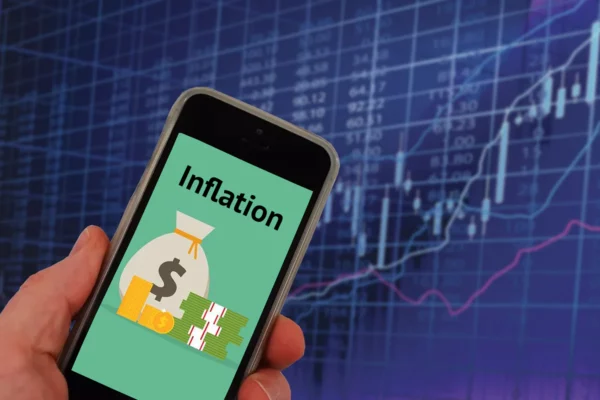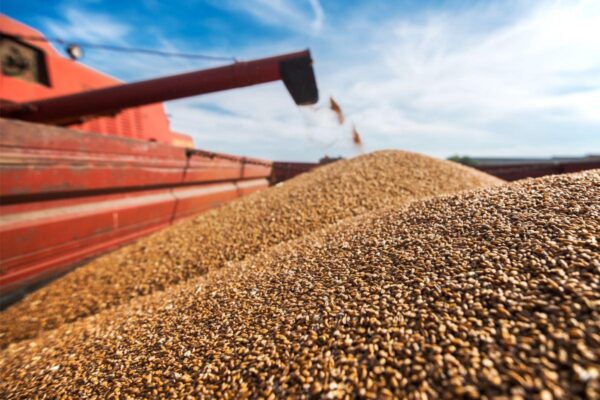Why Modi’s Wheat Export Ban Failed To Control Commodity Price Inflation?

Why Modi’s Wheat Export Ban Failed To Control Commodity Price Inflation
The terrible days of food inflation are still very much present. Although food commodities have decreased, the Reserve Bank of India (RBI) may still be concerned about the cost of wheat and rice before it meets with the Monetary Policy Committee.
Despite a ban on exports, Indian wheat prices increased to a record high due to rising demand and limited supply from a heat-damaged crop.
On the other hand, the conflict between Russia and Ukraine disrupted global supply networks and raised commodities prices. It gave India, the second-largest wheat producer in the world, the chance to fill the gap in the world’s wheat supply left by the conflict; Ukraine accounted for 13% of all global wheat exports.
Given the reduction of commodity prices globally, India’s inflation has likely peaked: Research by Morgan Stanley.
As global commodity prices have moderated, India’s domestic demand has remained more significant than its foreign demand, and inflation has likely peaked.
According to the report, high-frequency data for June showed that the demand for consumption centred on services was robust, industrial activity showed a mixed trend, and the foreign market continued to drop.
Additionally, it stated that early trends for July show data holding across sectors, with ex-residential mobility being reasonably steady and jobless rates declining from the prior month.
“Credit growth is still increasing and has already risen to its highest level since April 2019 “in its ‘India Economics – Macro Indicators Chartbook’, Morgan Stanley Research.
It also said that as commodity prices have moderated, the worst of the macro stability is probably behind us.
“Commodity prices have stabilized globally, and higher frequency food prices are growing more gradually than expected.
It is anticipated that macro stability indicators will experience some relief from moderate commodity price increases. We expect the short-term inflation trajectory to improve as commodity prices average and domestic food prices correct more quickly, “It read.
The current fiscal year ends in March 2023 and is anticipated to see inflation based on the consumer price index averaging 6.5 per cent. Nevertheless, we do not see much of a rise in inflation after FY23 and anticipate it to average 5.3 per cent in FY24. Changes in commodity prices and domestic food costs provide short-term threats to the inflation trajectory, “It read.

According to Morgan Stanley Research, monetary policy normalization will continue; by April 2023, a terminal repo rate of 6.5 per cent will be reached. The statement reads, “We expect real rate normalization to maintain macroeconomic stability and establish the groundwork for a prolonged GDP rebound.”
It also stated that although the trade imbalance reached a new high in June, it is projected to decline progressively.
In June, India’s trade imbalance reached a record high of $25.6 billion.
It noted weaker global growth’s potential risks to the growth trajectory.“In December 2022, our team studying international economics projects that global growth will have slowed to 1.5% YoY. These three channels of transmission—slower trade expansion, tighter financial conditions, and fluctuating commodity prices—are what we can see.
Given the link between exports and Capex, we, therefore, lower our projections of export growth, which is already displaying some signs of a slowdown, with some follow-through to domestic capex demand,” it said.
Domestic demand would, however, offer a partial counterweight. According to the article, “we anticipate assistance from the government’s supply-side reaction and the reopening vibrancy to outweigh the negative partially.”
It said that the government’s policy changes should support Private Capex, increased investment in public infrastructure, and the trend toward supply chain diversity. It anticipates 6.4 per cent GDP growth in FY24 and 7.2 per cent GDP growth in FY23.
Why Is Wheat Production Impacted?

This year’s hot wave across India generated worries from many stakeholders and experts about the country’s production and procurement. However, the government moved ahead and permitted the private sector to export wheat. According to reports, the action netted farmers 10% more money than the wheat Minimum Support Price (MSP).
But on May 14, the administration had to change its mind due to India’s alarming food inflation. Retail inflation in India had now exceeded 6% for six months as of June, when it was 7.01 per cent, exceeding the RBI’s target range of 2 to 6%.
Even if the export of food products was restricted and the price of edible oil softened, these measures could not stop food inflation. Food basket inflation in June was 5.66% for grains and goods, 8.61% for meat and fish, and 17.37% for vegetables.
As if the surging inflation brought on by a concoction of domestic and international variables weren’t bad enough already, a heat wave in March made things even worse for wheat prices.
Wheat prices in local markets hit a new high of Rs 23,547 a tonne on July 27. This is an increase of over 12% from the recent lows it experienced due to the government’s export prohibition.
According to government estimates, India harvested 109.59 million tonnes of the crop in 2021; traders claim that this year’s supply is substantially lower at only 95 million tonnes. The US Department of Agriculture Foreign Agricultural Service pegs supply at 99 million tonnes.
The government’s purchase of wheat this year, at 18.8 million tonnes, is 57% less than it was a year ago due to the March heat wave.
The government made poor policy judgments, such as allowing exports before later forbidding them, due to incorrectly estimating excess production caused mainly by faulty wheat production and analytics intelligence.
The Rice Situation: What Is It?

If the wheat supplies ran out, the government counted on paddy to save the day. Paddy, however, is now also a source of worry.
The critical paddy farming belts of India, Bihar, Odisha, West Bengal, and Uttar Pradesh, have experienced less acreage because of the scattered monsoon that has been occurring since the beginning of June. Up to June, acreage decreased roughly 17% from the previous year.
Only seven of the 36 subdivisions had insufficient rainfall as of July 25. However, rain has been distributed unevenly, and there is growing concern that this may lead to lower sowing, leading to poorer production. According to a Bank of Baroda paper, it could negatively influence food inflation.
While the return of the monsoon in these areas has given rise to optimism about paddy planting accelerating, there are worries about eventual harvest volumes because a substantial amount of sowing would occur after the peak of the monsoon. The recent lack of rain has caused rice prices to rise.
All types of food grains are in short supply on international markets. But unlike wheat, rice supplies are reasonably secure for India because there is more than enough rice in the government’s central pool.
Up to July 1, rice supplies were about 134% more than what was needed for buffer stocks. While the demand called for 13.5 million tonnes, the central pool’s stocks were around 31.5 million tonnes. Wheat inventories were approximately 28.51 million tonnes for the same time, which is 1 million tonnes more than what was needed as a buffer.
Can Wheat Prices Be Controlled In Coming Months?

The amount of rice and wheat in India’s stocks as of July 1 was 83.36 million tonnes, the lowest level in the previous three years. In May, the government added rice to the Pradhan Mantri Gareeb Kalyan Yojana to replace around 5.5 million tonnes of wheat to manage wheat supplies.
Even under the National Food Security Act, the government switched 6.1 million tonnes of grain for rice, creating around 11 million tonnes that might be used to control wheat supplies.
Wheat stock scarcity will cause price increases, worsening food inflation. Under the public distribution system, most of India’s marginalized population is sustained by wheat, a staple food in many countries. This time, limiting exports might not be sufficient to keep prices in check.
edited and proofread by nikita sharma




